Art World
New X-Ray Images Reveal Just How Carefully Picasso Worked Over His Earliest Blue Period Paintings
Researchers found 13 distinct layers in one 1902-03 canvas.
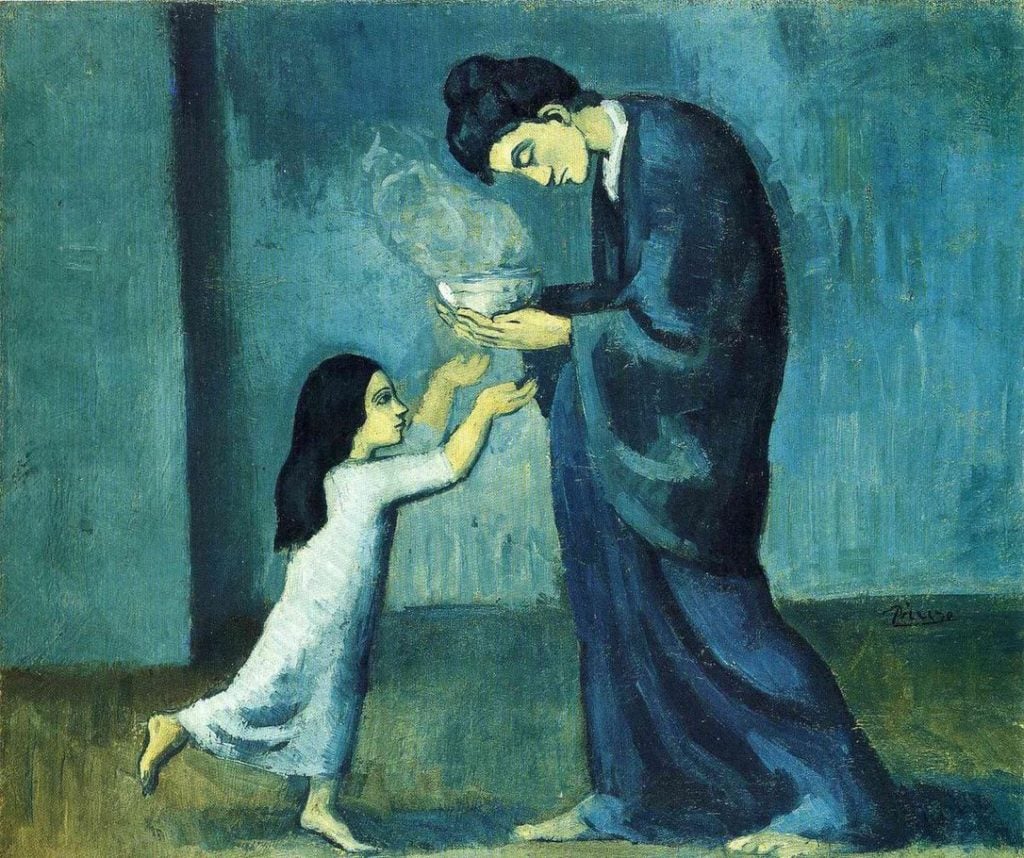
Researchers found 13 distinct layers in one 1902-03 canvas.

Sarah Cascone

Thanks to advanced imaging technology, art historians have new insights into the creative process behind Pablo Picasso’s Blue Period. Their findings, presented at the annual American Institute of Conservation meeting last week, show that the artist reworked his painting La Soupe (1902–03) repeatedly, leaving behind 13 distinct layers of paint that have now been thoroughly analyzed by a team of researchers.
La Soupe has belonged to the Art Gallery of Ontario since 1983. But only now, after a three-year technical study of the institution’s Picasso holdings, is it possible to really understand how the painting was created. Scans show that elements were added and subtracted from the composition at several points. A third figure, of a woman facing away from the viewer, once stood between the child and the woman holding out the bowl of soup. A ceramic jar was also part of the scene at one point.
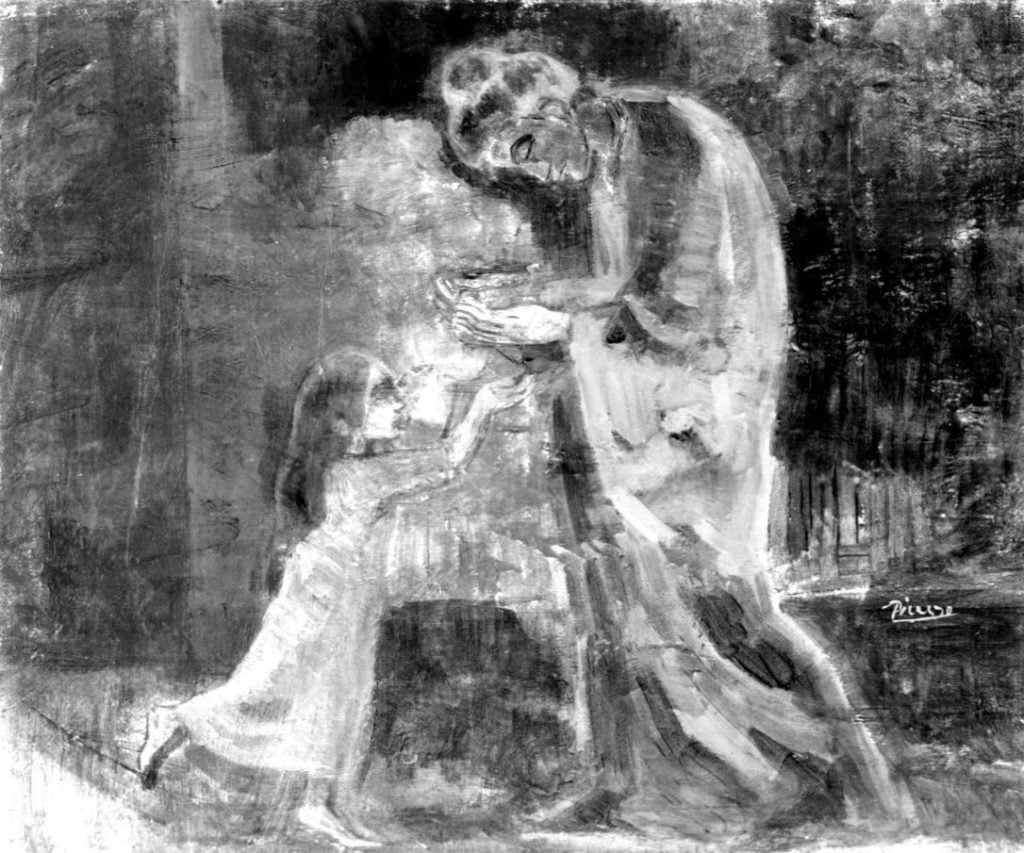
Pablo Picasso, La Soupe (1902–03), infrared hyperspectral image showing covered up details, such as a woman in between the two figures, eventually replaced by steam rising over the bowl of soup. Courtesy of the Art Gallery of Ontario.
“For a long time, it’s been clear that the thick textured paint of La Soupe held secrets below,” said Sandra Webster-Cook, the museum’s senior painting conservator, in a statement. “We knew from the x-radiograph and even looking carefully with the naked eye that another painting had been scraped down before La Soupe was painted. But exactly what was beneath the surface was a mystery. Thanks to sophisticated imaging and analysis, we’ve unlocked those secrets.”
In his lifetime, Picasso had hinted at the possibility of such discoveries—the artist often changed course during his painting process, and was sometimes forced by financial circumstances to reuse old canvases.
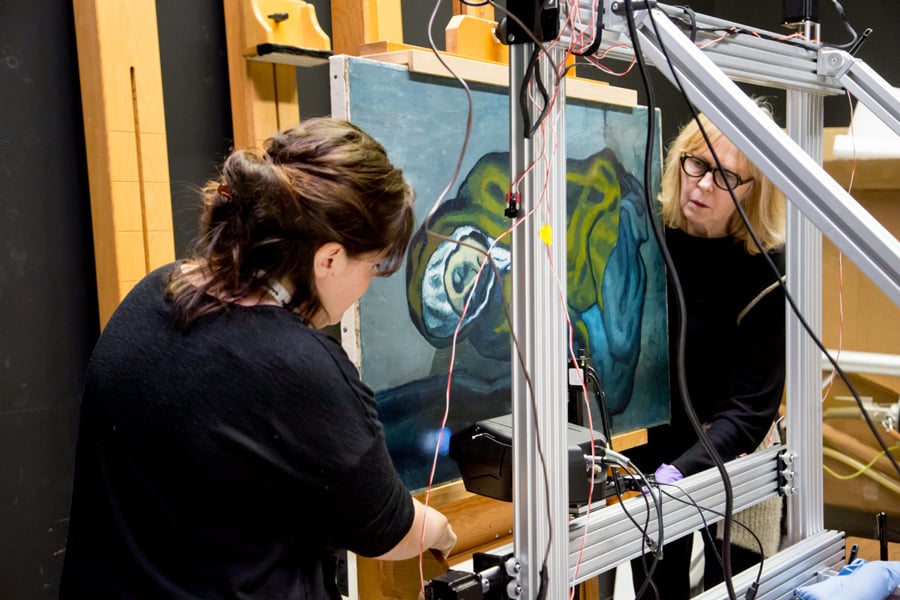
Pablo Picasso’s La Miséreuse accroupie (The Crouching Woman) (1902) being analyzed at the Art Gallery of Ontario. Photo courtesy of the Art Gallery of Ontario.
“In the 1950s, he said, ‘You should be doing x-rays of my work, because you’ll find things underneath,’” Kenneth Brummel, the AGO’s assistant curator of modern art, told the Toronto Star. “He didn’t get any more specific, but he urged people to do just that.”
With that in mind, AGO approached imaging scientist John Delaney at the National Gallery in Washington, DC, about investigating its Blue Period Picassos. The work was done using infrared reflectance hyperspectral imaging that records the differences in reflectivity between types of paint pigments. Imaging scientists are able to isolate each layer of paint, so they can essentially see through the upper coats and reveal an image of what has been covered over.
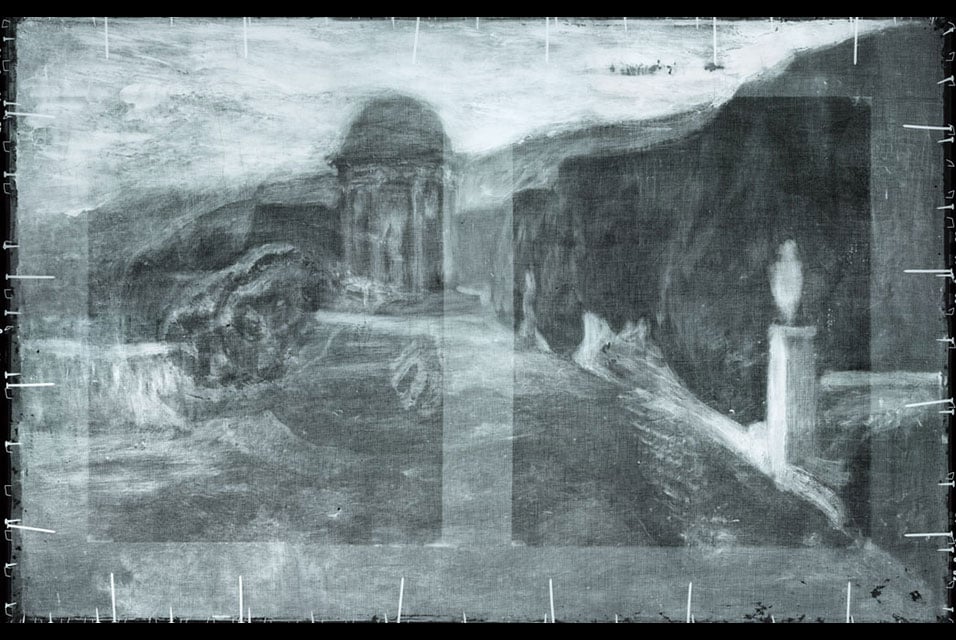
X-ray radiography of Pablo Picasso’s La Miséreuse accroupie (The Crouching Woman) (1902) reveals a landscape hidden beneath the visible surface. Photo courtesy of the Art Gallery of Ontario.
The AGO also worked with the Northwestern University/Art Institute of Chicago Center for Scientific Studies in the Arts, or NU ACCESS, which brought a portable x-ray fluorescence scanner to Toronto on two separate occasions to study the paintings. The scanner can detect the elements used in different pigments—like iron-based Prussian blue versus lead white or chromium-based yellows—and translate this information into grayscale images.
“To travel a work of art to one of these national facilities is difficult because museums don’t want to move their paintings,” Mark Walton, NU ACCESS’s co-director, told the Daily Northwestern. “It’s expensive. It’s potentially damaging… We’ve made an inexpensive way of being able to bring that technology to the paintings, which opens up new possibilities to scanning many more paintings.”
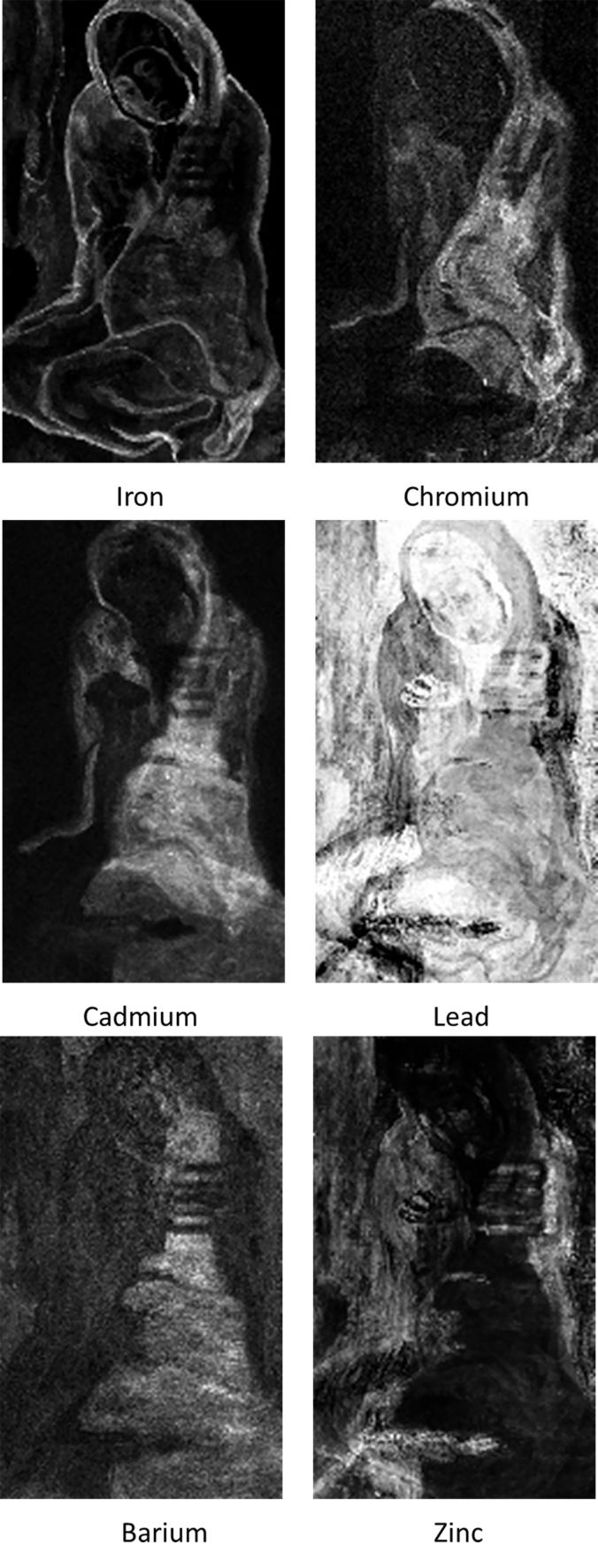
Imaging analysis of Pablo Picasso’s La Miséreuse accroupie (The Crouching Woman) (1902) showing the different layers of pigment. Image courtesy of the Art Gallery of Ontario.
In February, the AGO had previously revealed similar findings from the research for another Blue Period work, La Miséreuse accroupie (The Crouching Woman) (1902). It turned out that the image was painted on top of a hilly landscape that had been painted by another artist.
Picasso appears to have incorporated the basic shapes of the existing artwork, which he rotated 90 degrees, into the final work, so that the slope of the woman’s back follows that of the hill that was already there.
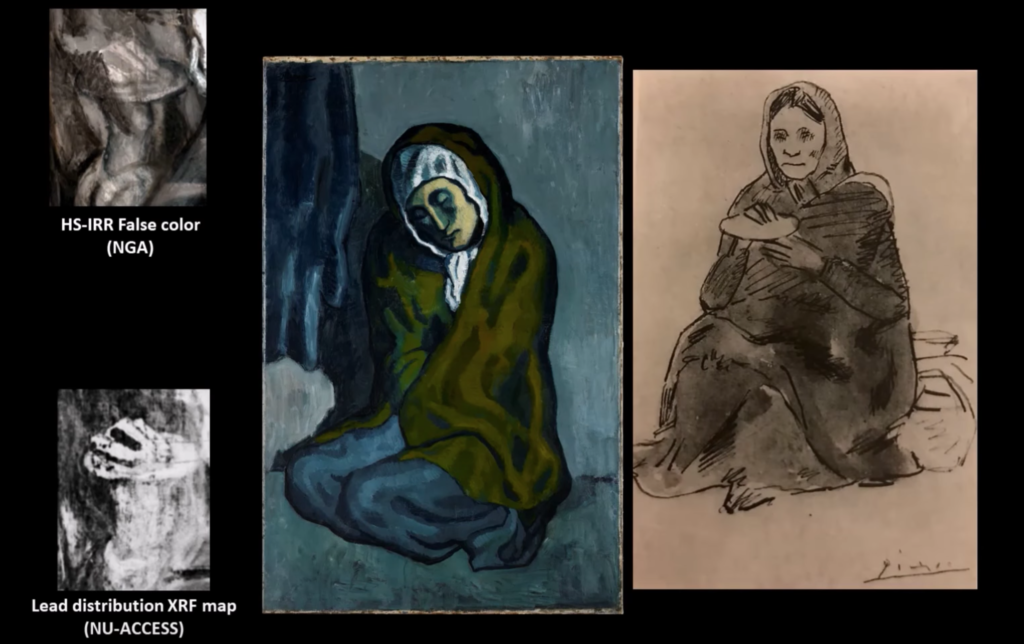
Pablo Picasso’s La Miséreuse accroupie (The Crouching Woman) (1902), infrared imaging of an earlier, now covered draft with an outstretched hand, and another work by the artist featuring the abandoned composition. Image courtesy of the Art Gallery of Ontario.
The hidden painting is thought to depict the Jardin Labarint d’Horta in Barcelona, and to have been painted by a student at the nearby art academy. “We think that this is an artist who is not particularly in [Picasso’s] close circle, but someone in his orbit,” Brummel told TVO.
The new research also revealed that Picasso’s Crouching Woman originally showed the female figure’s right arm, which is covered by her cloak in the final version, lifting up a piece of bread. Further investigation found that a separate watercolor by the artist, Femme assise (1902), features this alternate figure.
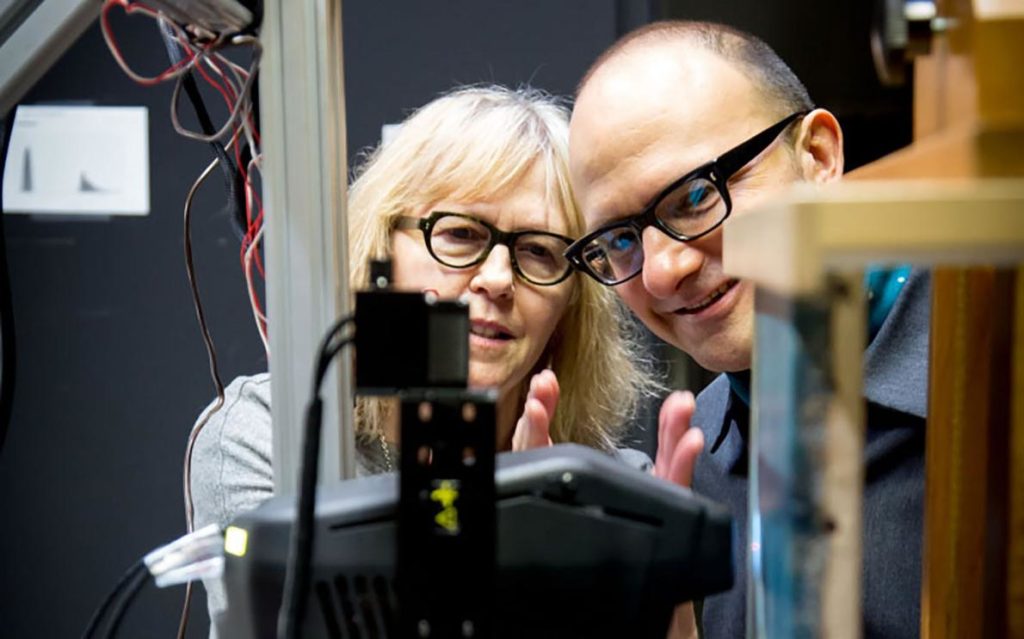
The Art Gallery of Ontario’s Sandra Webster-Cook, a conservator, and Kenneth Brummel, an assistant curator of modern art, using the x-ray fluorescence scanner on Picasso’s La Miséreuse accroupie (The Crouching Woman). Photo courtesy of the Art Gallery of Ontario.
The Ontario museum is now organizing an exhibition with the Phillips Collection in Washington, DC, which discovered a hidden portrait beneath the artist’s The Blue Room (1901) in 2014. The show, which details discoveries about Picasso’s Blue Period made via high-tech imaging, is scheduled to go on view in 2020–21.